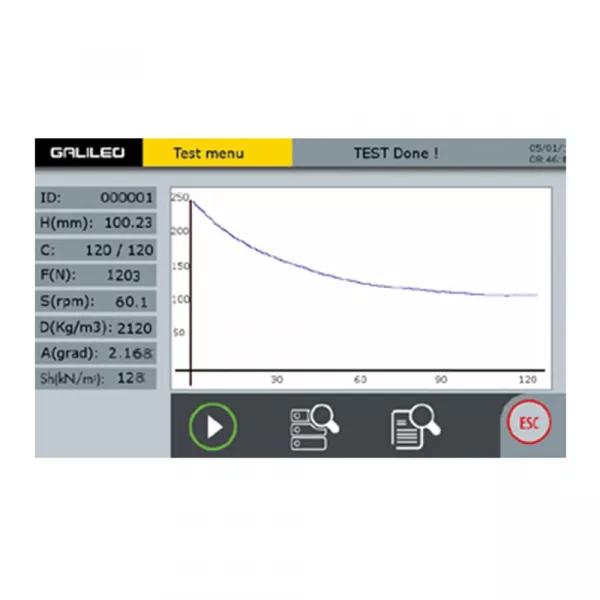This method, very popular in Scandinavia, is used for mix design and quality control mainly in concrete products plants, where low workable and zero slump concrete is used (for such products as hollow-core slabs, tubes and paving blocks).
The method is used for: mix design simulating selected production processes specimen preparation for strength test (fresh and cured) research of mix related phenomena (workability, curing time, admixtures etc.).
Compaction is achieved by the simultaneous application of a low-static compression and a shearing action, which results in the motion of the centre-line of the test piece, which generates a conical surface of revolution while the ends of the test piece remain approximately perpendicular to the axis of the conical surface.
The machine is equipped with 100 mm diameter mould with stripping accessory and processes in real time the evolution of sample density versus the number of cycles and plots the compaction curve.
It's possible to upgrade the machine in order to measure the Shear during compaction in kN/ m2. Shear is a measuring parameter useful for a deeper selection/ dosage and tuning of no-slump concrete components. For instance, a very small change in water and plasticizer can shift notably the positioning of max shear value along the compaction curve. Increase of water and plasticizer generally shift the max shear value toward the first gyratory cycles; instead the decrease of water and plasticizer shift the max shear toward the end of compaction.





